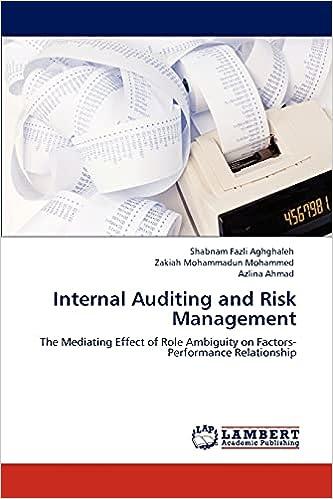Question
I need only answers. No explanation is needed. Thank you in advance. 8. The eliminations and adjustment entries necessary to consolidate the parent and subsidiary
I need only answers. No explanation is needed. Thank you in advance.
8. The eliminations and adjustment entries necessary to consolidate the parent and subsidiary financial statements are translated as follows:
a. all balances, profits, and losses at the current exchange rate on the consolidation date
b. intercompany balances translate at the rates used for other accounts, profits and losses maybe translated at an average rate
c. intercompany balances translate at the current rates, profits and losses translate at an average rate
d. none of the above are correct
10. If a US. parent loans funds on a long-term basis to a subsidiary denominated in the subsidiarys foreign currency, the effect of rate changes on the loan:
a. are first offset against other comprehensive income resulting from translation of the foreign entitys financial statements with any excess being included in income.
b. are first offset against any foreign currency transaction gains or losses resulting from other intercompany transactions, with any excess being included in other comprehensive income.
c. are included in other comprehensive income because the loan is considered a long-term investment transaction
d. are considered foreign currency transaction gains and losses and are included in income.
11.Which of the following best describes the proper accounting for interim financial reports?
a. Interim reports should include the same level of disclosure as annual reports.
b. Net income should be computed on the cash basis except for sales, cost of goods sold, and depreciation.
c. The interim period is viewed as an integral part of the annual accounting period.
d. The interim period is viewed as a distinct, independent accounting period.
16. Which of the following is not required to be disclosed for a reportable segment?
a. Segment liabilities
b. Types of products and services from which the segment derives revenue.
c. The measure of profit or loss that is reviewed by the chief operating decision maker.
d. Segment assets
17. A reconciliation of the revenue, profit and loss and asset amounts presented for reportable segments to the respective consolidated amounts for the entity:
a. is required only if the entity elects to use the management approach to determine its operating segments.
b. None of the above is correct.
c. is also required for other significant items presented by segments, such as depreciation and amortization.
d. is not required if all segments are considered reportable.
Step by Step Solution
There are 3 Steps involved in it
Step: 1

Get Instant Access to Expert-Tailored Solutions
See step-by-step solutions with expert insights and AI powered tools for academic success
Step: 2

Step: 3

Ace Your Homework with AI
Get the answers you need in no time with our AI-driven, step-by-step assistance
Get Started


